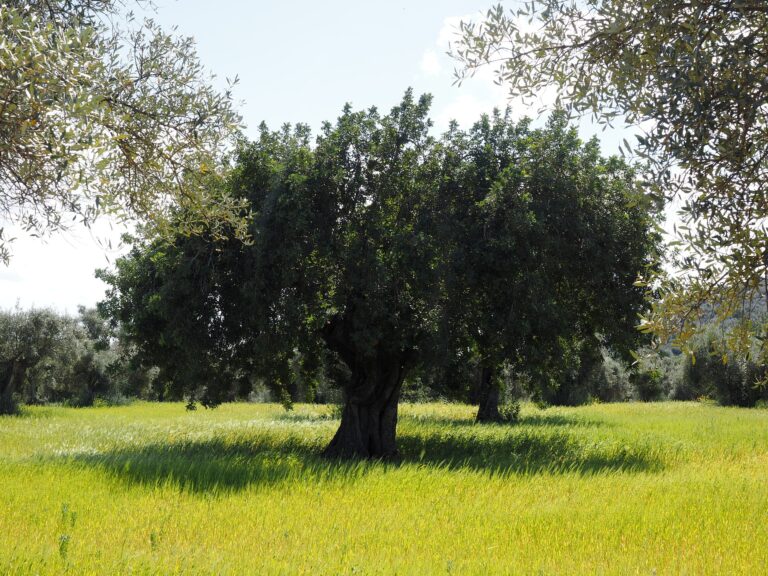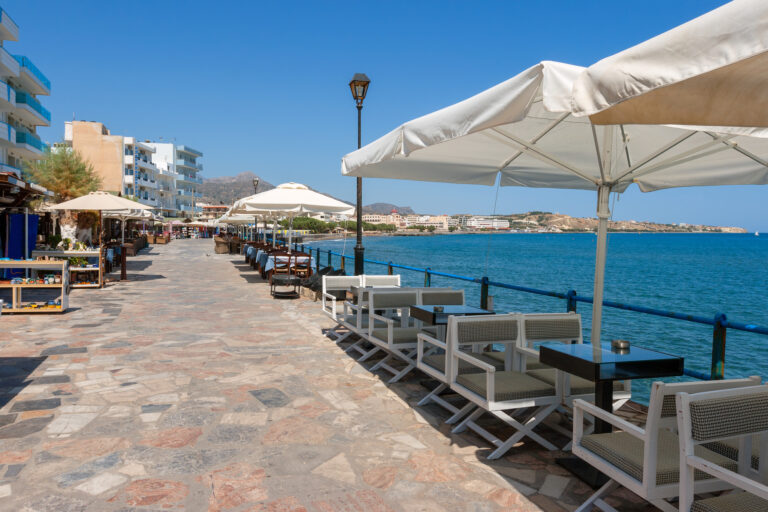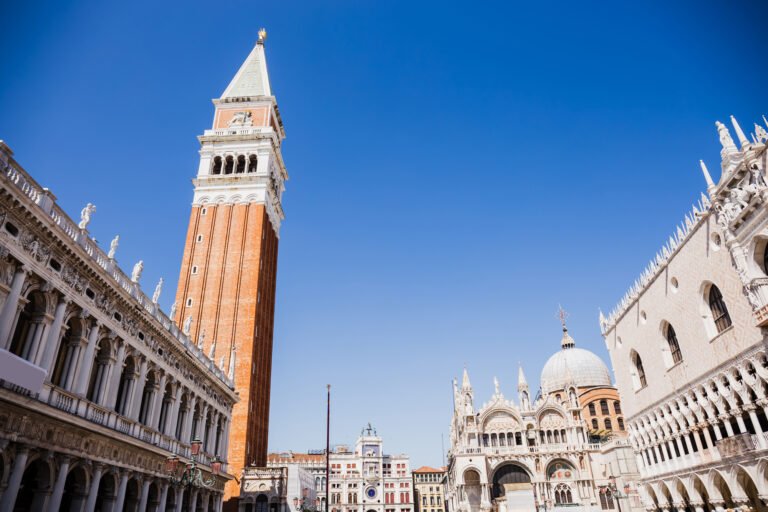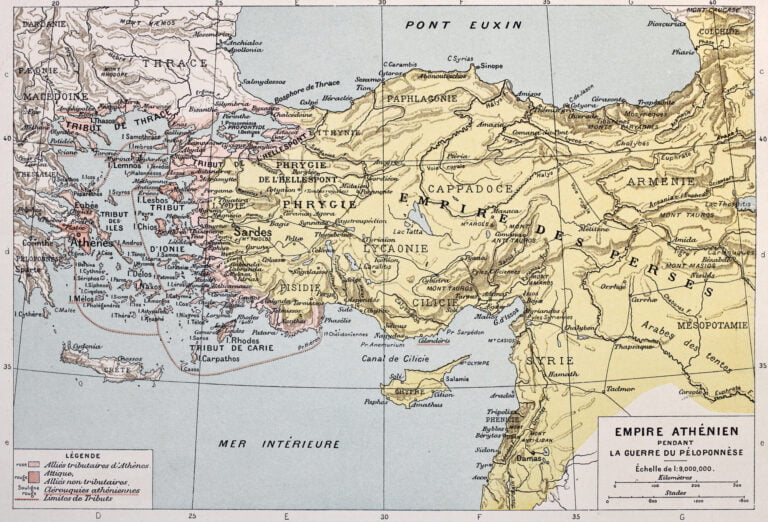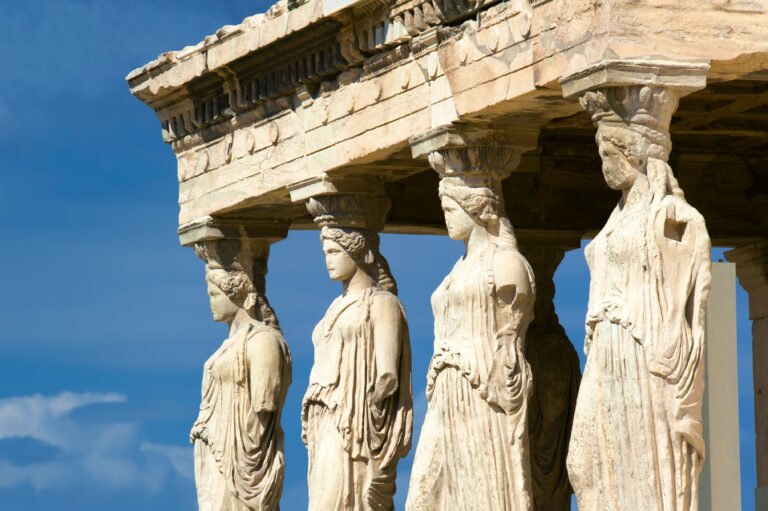Argyroupoli: From Magnificent Ancient Lappa to Modern Crete
Argyroupoli, a picturesque village in the Rethymnon regional unit on the Greek island of Crete, is steeped in history and unique charm. Its rich heritage, dating back to the Minoan and Roman period, continues to shape its identity.

From Lappa to Argyroupoli
Once known as Lappa, this village traces its roots to the 8th century BCE. Lappa, regarded as one of the most significant cities in ancient Crete, enjoyed a period of prosperity during the Hellenistic era. Archaeological findings hint at a vibrant city-state with a sophisticated society.
The Romans occupied Lappa in 67 BCE, bringing significant infrastructural advancements, such as the majestic aqueduct that supplied water to the city and surrounding lands. Lappa became an essential hub for the Romans, embellishing it with grand buildings, beautiful mosaics, and a thermal bath complex.
The city witnessed turbulent times during the Byzantine period. Natural disasters, invasions, and wars led to its decline. Lappa, however, remained strong. It endured, witnessing a transformation from ancient Lappa to Argyroupoli, named after silver (argyros) coins unearthed during excavation works.
A Walk or Bike RideThrough Modern Argyroupoli
Today, Argyroupoli stands as a living testament to the rich tapestry of history that has unfolded over the centuries. Its stone houses, narrow alleys, and traditional kafenion – coffee shops – transport visitors back in time, offering a slice of authentic Cretan life.
Archaeological Treasures
Argyroupoli’s heart boasts archaeological treasures from various eras. The Roman cemetery, a burial site with intricate sarcophagi and ancient tombstones, is a poignant reminder of a bygone era. In contrast, the Roman mosaic, beautifully preserved, depicts scenes from mythology, reminding us of the artistic skills that thrived in this ancient city.
Springs of Argyroupoli
One of the most distinguishing features of Argyroupoli lies in its natural beauty – the springs. Ancient Lappa thrived thanks to the water supply from the springs, which continue to sustain the village and its lush surroundings. The springs converge to form charming waterfalls, creating a tranquil oasis. Traditional tavernas near the springs allow visitors to enjoy local cuisine and the soothing sounds of flowing water. Let’s discover some of the essential dishes you can savour here:
Fresh Trout
Argyroupoli’s springs do not just quench the thirst of its landscapes; they also sustain a thriving trout population. Tavernas around the springs serve this local fish, freshly caught and expertly cooked. Grilled to perfection, the trout brings forth delicate, succulent flavours. Often served with a simple dressing of local olive oil, lemon, and herbs, this dish lets the freshness of the fish take centre stage.
Antikristo Lamb
Argyroupoli is renowned for its preparation of ‘antikristo’ lamb, a traditional Cretan dish. Antikristo derives its name from the cooking process – the lamb pieces are skewered on a spit and cooked around (‘anti’) the fire (‘kristo’) rather than over it. This slow-cooking method allows the lamb to cook in its juices, producing tender, flavourful meat with a subtle smoky undertone. A feast of antikristo lamb often signifies celebrations and gatherings, making it a dish synonymous with Cretan hospitality.
Pork and Chicken Dishes
Pork and chicken are staple meats in Argyroupoli’s cuisine. Pork finds its way into ‘apaki’, a traditional smoked pork dish local favourite. The pork is smoked and marinated with aromatic herbs and vinegar, lending it a unique, robust flavour.
Conversely, chicken often comes stewed in tomato sauce or cooked with local herbs and olive oil. They typically serve pork and chicken dishes with potatoes, vegetables, or rice, making for hearty, satisfying meals.
Local Produce and Olive Oil
Argyroupoli’s rich soil yields an abundance of fresh produce. Tavernas capitalise on this bounty, integrating local vegetables and fruits into their dishes. From vibrant Greek salads to stuffed vegetables (gemista), the taste of the sun-ripened produce is undeniable.
The use of olive oil, arguably the liquid gold of Crete, is prominent in Argyroupoli’s cuisine. It lends the dishes a distinct, earthy flavour while enhancing their nutritional value. Whether drizzled over a salad or used for cooking meats, this high-quality olive oil is a testament to the region’s agricultural richness.
Traditional Crafts and Local Produce
Argyroupoli, though small, plays a vital role in keeping Cretan traditions alive. Local workshops create traditional Cretan boots, known as ‘stivania’. This footwear, made with meticulous craftsmanship, has become a symbol of Cretan identity.
Similarly, Argyroupoli’s fertile lands yield high-quality produce, the most notable being olive oil. The Cretan olive oil, celebrated worldwide for its superior quality, thrives in this region. Many olive groves surround the village, and local olive oil production remains a significant part of the economy.
Church of Five Virgins
The Church of Five Virgins, named after five young women who sought refuge from invading forces, represents Argyroupoli’s spiritual side. According to local folklore, these young women hid in a cave near the church. When discovered, they chose martyrdom over renouncing their faith. Today, the church, nestled amidst a beautiful landscape, symbolises courage and faith, attracting many visitors.
The Legacy of Argyroupoli
Argyroupoli stands as a bridge between the past and the present, balancing its historical significance with its modern reality. Its preserved artefacts, structures, and local traditions.
Beneath the Historic Surface
Hidden beneath the quaint surface of Argyroupoli lie buried secrets waiting to be discovered. Archaeological efforts continue to unearth pieces of history, offering glimpses into the village’s rich past. Carefully preserved findings enrich our understanding of the ancient civilisation that once thrived here.
Festivals and Events
Festivals form an integral part of Argyroupoli’s culture. The village’s events calendar is packed with celebrations that imbue the streets vibrantly. The Feast of Five Virgins, held annually, is a significant event. This religious festival sees locals and visitors gathering at the church to honour the courage of the five young women. Traditional music, dances, and feasting enliven the celebration, showcasing Cretan hospitality at its finest.
Preservation of Natural and Cultural Heritage
The local community plays a vital role in safeguarding Argyroupoli’s natural and cultural heritage. Efforts to maintain the village’s traditional architecture, protect the springs, and promote sustainable tourism ensure that Argyroupoli’s charm remains undiminished for future generations.
Conclusion
Argyroupoli, with its cobblestone lanes, ancient ruins, traditional customs, and natural beauty, continues to captivate visitors. It serves as a silent custodian of Crete’s rich history while showcasing the region’s modern vibrancy. Argyroupoli is more than just a village; it is a testament to the resilience and perseverance of its people, a living history book that continues to add new chapters with each passing day. Its story is one of endurance and reinvention – a story that encapsulates the spirit of Crete.
In essence, a visit to Argyroupoli is not just a journey through space but a journey through time. It offers the chance to connect with an ancient world, appreciate the traditions that have shaped the Cretan identity, and experience the unique beauty of a village that continues to flourish despite the challenges of time.
Table of Contents
Views: 165


